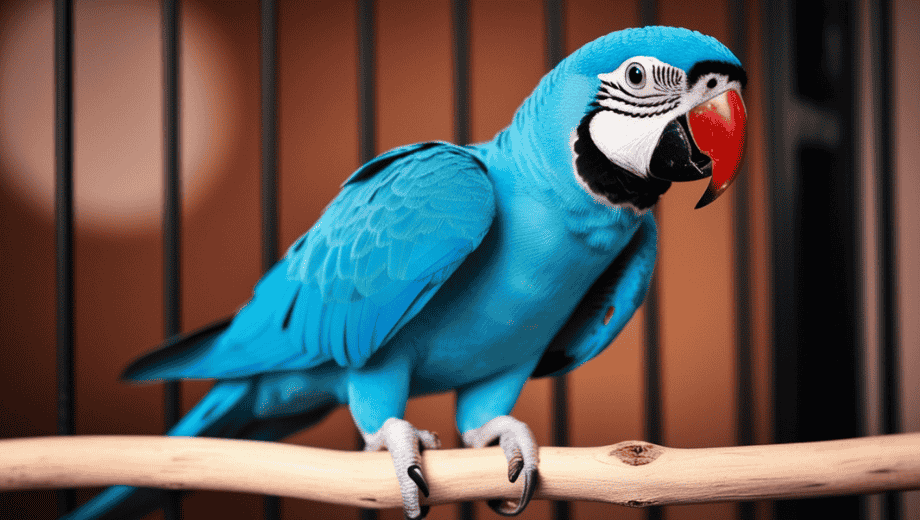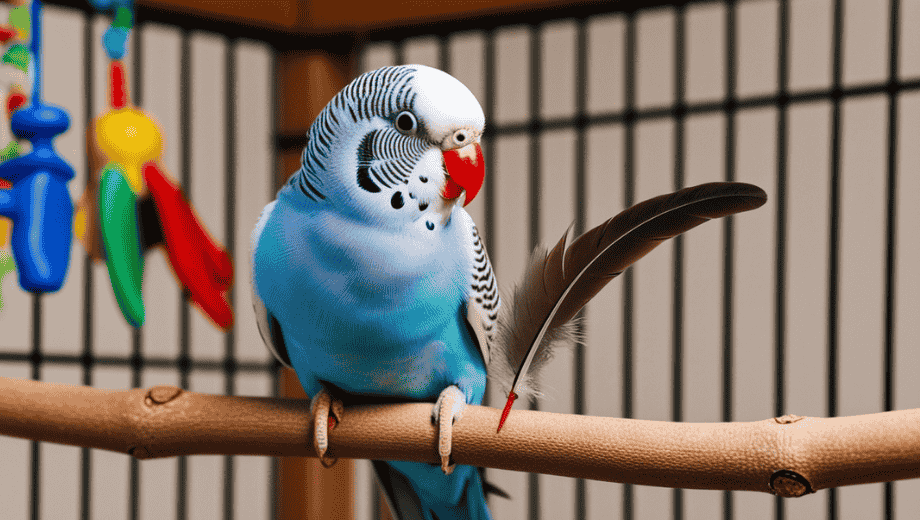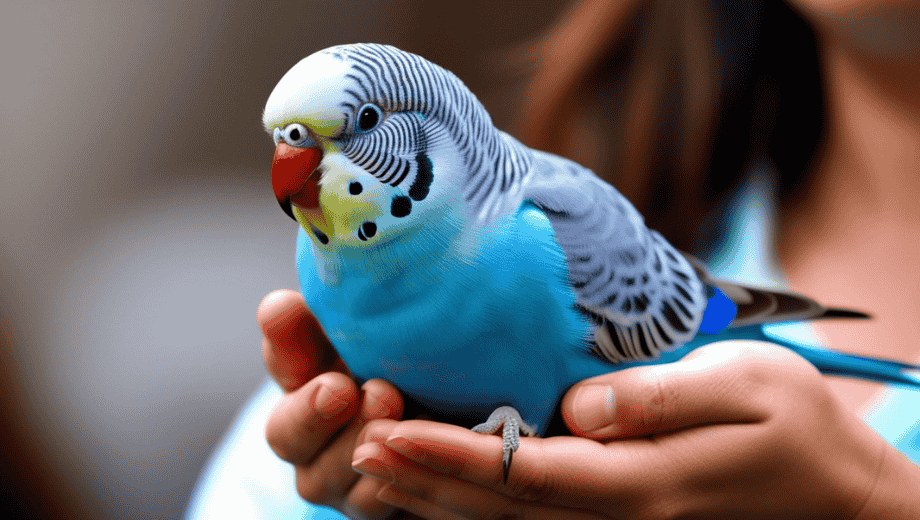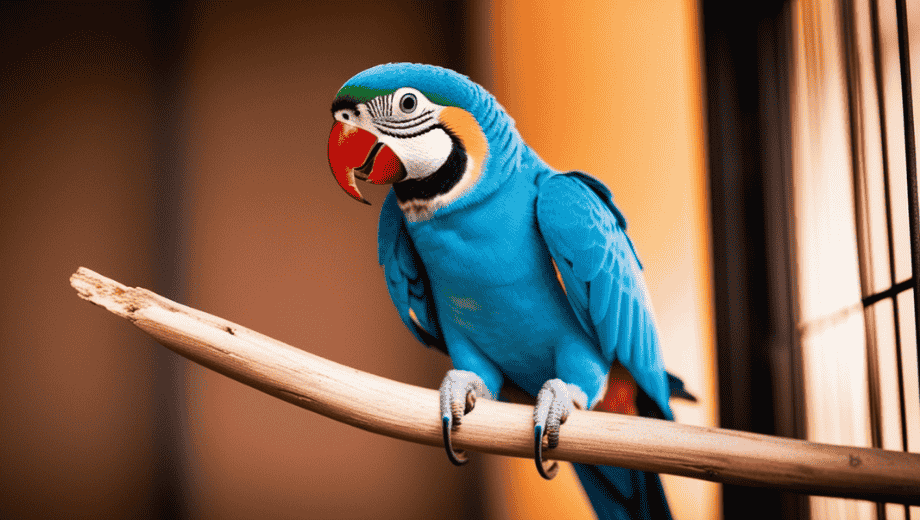Have you been considering getting a Blue Indian Ringneck Parrot as a pet? These gorgeous birds are the epitome of vivid blue and have very distinctive personalities that match. If you are the right person, can be excellent companions. The Blue Indian Ringneck is a beautiful type of the Indian Ringneck species. are the smartest and the most talkative of all ringneck species. These birds can thrive for up to 30 years, one of the most significant commitments, although will love you in return.
Key Facts:
- Their parrot babies are usually 16 inches long and may have a 28-33 year life span.
- To maintain an ideal weight and strong bones, have fruits, vegetables, leafy greens, and pellets in their diet.
- The most stimulating cages and a variety of toys should be provided for the birds to indulge in.
- Also, if you notice that one of the Blue Indian Ringnecks is vocalizing sound patterns that are not his own but are from someone whose speech melody he is copying, it is talking.
- It is important to remember that these birds are part of the Cecile family, and in a deserved manner, they also need vet visits, clean drinking water, and a home of their own.

Physical Characteristics and Appearance
Have you been considering getting a Blue Indian Ringneck Parrot as a pet? These gorgeous birds are the epitome of vivid blue and have very distinctive personalities that match. If you are the right person, they can be excellent companions. The Blue Indian Ringneck is a beautiful type of the Indian Ringneck species. They are the smartest and the most talkative of all ringneck species. These birds can thrive for up to 30 years, one of the most significant commitments, although they will love you in return.
Key Facts:
- Their parrot babies are usually 16 inches long and may have a 28-33 year life span.
- To maintain an ideal weight and strong bones, they have fruits, vegetables, leafy greens, and pellets in their diet.
- The most stimulating cages and a variety of toys should be provided for the birds to indulge in.
- Also, if you notice that one of the Blue Indian Ringnecks is vocalizing sound patterns that are not his own but are from someone whose speech melody he is copying, it is talking.
- It is important to remember that these birds are part of the Cecile family, and in a deserved manner, they also need vet visits, clean drinking water, and a home of their own.
Physical Characteristics and Appearance
The Blue Indian Ringneck Parrot is a middlesized breed of birds. They have a length of 14-17 inches; hence, their long tails are half their length. Professionals consider This size big enough to form the largest bird community in a house where the owner can also be present. Besides, they also go a long way and help to keep the other guests entertained. They have a trim body and a beak that is sharply bent. They are always on the lookout for something and have bright eyes.
When the male Blue Indian Ringneck Parrot comes 18-24 months of age, a highly defined mark in the form of a ring becomes visible around its neck. In stark contrast, the females do not exhibit a similar sign of having a ring. They are available in various hues, such as cobalt, which can be made of lighter blue feathers and darker wings or have more uniformly coloured feathers throughout their bodies. They have a beak that is usually black.

Social Nature and Intelligence
Blue Indian Ringnecks are social creatures and can bond with humans. *They are smart enough to be trained on much knowledge. They are characteristically attention-seekers and can become aggressive if not sufficiently interacted with. They might be slightly shy out of the gate, but once they get settled, they will be very friendly,
Perhaps these birds are best known for their mimicry, which is unusual for animals. Many owners are horrified at the extent of their oratory skills. On the other hand, they can also show a different facet of their personality, which can be dangerous if they are unhappy with their treatment. Meeting with them consistently and regularly will help them feel secure and centred.
For better mental health, ringnecks must interact with humans. They enjoy playing and even making up new tricks. Puzzle toys will be an option, as they will amuse guests and keep them mentally alert. These adorable pets can develop behavioural problems or experience stress due to a lack of companionship.
Key Point:
A healthy condition for Blue Indian Ringnecks means regular interaction, training, and mental stimulation that keeps them alive and kicking.
Housing Requirements Cage Setup
Blue Indian Ringnecks are sure to benefit greatly from a big cage. They certainly need a lot of room so that they will be able to flutter their feathers and move as they wish. The lowest height of the cage should be 36 inches, and the width should be 24 inches. Nevertheless, an enormous birdcage is the best choice. To avoid running away and getting injured, ensure the distance between the bars is 1/2 to 5/8 inches.
Adding wooden perches of natural materials provides a nice place for your bird to sit and keep its feet healthy—at least without a single healthcare facility. It’s also the best gesture to add several perches of different widths to your bird’s cage so that he can exercise his feet. Keeping a separate feeder and waterer will prevent them from becoming dirty. The cage should be kept in a quiet, non-glaring area, away from drafts and direct sunlight. Furthermore, put the cage at eye level so your bird will not feel lonely.
You can add a variety of different kinds of toys to your bird’s birdcage. Different toys can be used, including foraging, swings, ladders, bells, etc. Mixing up toys to beat boredom and make things fresh.
Key Point:
Just be sure to have a spacious and clean cage with a few toys and adequate perches so your Blue Indian Ringneck Parrot can remain active and healthy.
Diet and Nutrition
A healthy diet has to be provided for Blue Indian Ringnecks. Their food consists of pellets, fruits, vegetables, and seeds. Supply quality pellets for starting each day. Pellets make up 60-70% of their daily food portion.
Fresh produce should come twice a day. Some of the best options are:
Apples (without seeds)
Carrots
Spinach
Kale
Sweet potatoes
Broccoli
Seeds should be 20% of their diet only. Remember, seeds are high in fat and should be fed as treats. Always take out any leftover fresh food in a couple of hours to prevent it from going to waste.
Keep your Blue Indian Ringneck Parrot away from dangerous foods like:
Avocados
Chocolate
Caffeine
Alcohol
Onions and garlic
Salty or sugary human foods
Key Point:
Your Blue Indian Ringneck’s health will be in good condition if you give the bird a mixed diet that includes pellets, fruits, and vegetables in an adequate amount.

Health and Wellness
Regular health care is essential for the pet bird to be healthy. Maintaining your Blue Indian Ringneck’s regular health is paramount, so book an appointment with a qualified avian vet. Like humans, birds, including Blue Indian Ringnecks, can have health problems.
Common Health Issues
Respiratory infections are common, especially if exposed to drafts or sudden temperature changes. Be on the lookout for symptoms such as wheezing and nasal discharge.
Psittacosis, also known as parrot fever, is a bacterial infection that is transmissible to humans. It is necessary to check your pet bird regularly to avoid and effectively treat the infection in case of seriousness.
Obesity is quite typical in birds that live in captivity. Confirm the bird has plenty of movement by encouraging it to fly and eat a balanced diet.
Vitamin A deficiency may cause swollen eyes, breathing problems, and weak health. Consuming a diverse diet full of vegetables is the best prevention of this illness.
Key Point:
Regular vet visits, a balanced diet, and monitoring your bird’s health multiple times are those actions that can help to avoid the occurrence of abnormalities that are typical for birds.
Training and Socialization
Training your Blue Indian Ringneck is a task that requires time, patience, and understanding. The birds are brilliant, and they respond very well to positive reinforcement.
Building Trust
Initially, be close to the cage calmly and quietly. Don’t forget to whisper and offer treats. Your bird will start to associate you and your presence with positive events. This will make rekindling trust between you and your bird easier.
The training sessions shall be short and enjoyable. Use a reward system for the bird, such as snacks, to reinforce good behaviour. You should never let yourself discipline your bird as this could lead to the loss of the trust you built; hence, be very cautious. Always be aware of the boundaries of your bird. Once your bird becomes uncomfortable, you should stop the training immediately.
Feeding the birds manually is a good way to feed them and helps build trust. In the beginning, use the cage bars to offer food; afterwards, try feeding them directly from your hand.
Key Point:
Positive reinforcement, patience, and respect for personal space will strengthen a strong relationship with a Blue Indian Ringneck.

Breeding and Reproduction
The breeding season for Blue Indian Ringnecks typically starts in early spring. They become sexually mature at 2-3 years of age, but they may breed a little later.
Nesting Requirements
Blue Indian Ringnecks need a wooden nest box to breed. The box should be about 12x12x24 inches, and the hole should be around 3 inches wide. Place the box on the side with a slight tilt to prevent the eggs from rolling out.
The female is responsible for laying the eggs, which the male will sit on and feed her during the incubation, which lasts 23 days. Immediately after hatching, the baby birds should stay in the nest for 6-8 weeks. The parents feed the latter through the regurgitation of food.
During the breeding period, calcium supplements should be provided, extra nutrition should be given, and a wide selection of foods should be ensured. Healthy food should be provided from 65 to 80°F. The eggs will be well-developed if the temperature is maintained in these ranges.
Key Point:
Blue Indian Ringnecks require specific care and conditions to reproduce successfully.
Conclusion
Blue Indian Ringneck Parrot is a challenging yet the most satisfying pet to keep. If cared for and given enough attention, these bright and beautiful birds can live for as long as 30 years. They can be an excellent company and easily develop a close bond with humans. Feeding a Blue Indian Ringneck, providing it with an appropriate habitat, making a regular vet visit, and showering it with much love and care. The Blue Indian Ringneck can be a joyful addition to your home if you invest a lot of time.
Common Questions (FAQs)
What is the average life expectancy of a Blue Indian Ringneck Parrot?
With appropriate care, for example, Blue Indian Ringnecks can exist 25-30 years. Some species can live as long as 50 years.
Can you teach Blue Indian Ringnecks to talk?
Of course, they can also speak pretty damn well. Given good habits, they will learn approximately 200-250 words. The first to speak are males, who speak at the age of 8 months.
Will a Blue Indian Ringneck be happy as a single bird (with no other birds)?
While they have a good relationship with their owners, they can also live alone. However, they still require lots of love and playtime.
How can I know if my Blue Indian Ringneck is a male or a female?
At 18-24 months, males develop a neck ring. The females are smaller and lack this ring.
What are the symptoms of a stressed Blue Indian Ringneck?
Signs of stress include feather plucking, loss of appetite, too much screaming, and aggressive behaviour.
Are Blue Indian Ringnecks good pets for beginners?
Because they require a wealth of attention and care, they’re probably not the best option for those who will be the owners of their first bird.

